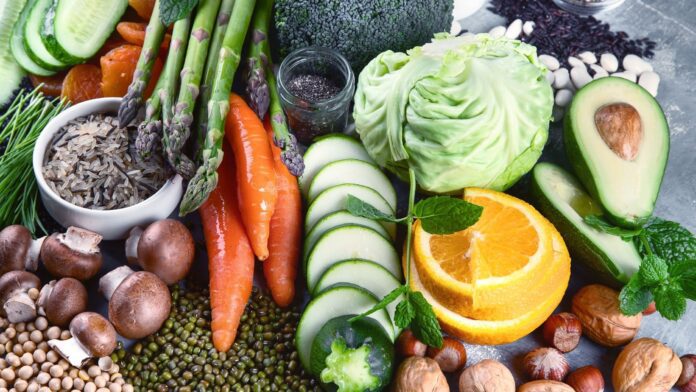Last Updated on July 24, 2023 by Shane Corbitt
Being on a plant-based diet is not about mindlessly eating vegetables and fruits and assuming that you’re getting all the nutrients you need. You must pay attention to your meals to know if you’re getting all your macro and micronutrients.
Before going any further, it’s important to establish that not all calories are made equal. Getting 100 calories from a candy bar and 100 calories from a serving of sweet potato may look the same on paper. However, common sense will indicate that the candy bar is doing your body harm while the sweet potato is good for you.
The calories are just one factor. How your body reacts to the food is another. The candy bar may spike your blood sugar levels and cause weight gain. The sweet potato will just nourish your body and give it fuel. Big difference.
That just means one thing – you need to make your calories count. Even on a plant-based diet, you have a daily caloric intake number to meet. You can find that number here: https://www.freedieting.com/tools/calorie_calculator.htm
The next step is to ensure that you’re getting your macros and micronutrients in the right proportions to meet this number. Initially, it may be a little confusing as to how much of each food you should eat. However, after a while, it’ll become second nature to you.
As far as micronutrients go, making yourself different types of red juices and green juices should give you all the micronutrients your body needs. Juice vegetables and fruits such as celery, kale, apple, parsley, cucumber, tomatoes, berries, pineapples, beets, cranberries, carrots, lemon, watermelon, etc.
Just by juicing alone, you’ll have a ton of micronutrients in your diet. Drink a different juice daily. You can find a ton of recipes online to help you with this. The goal is to keep things simple but also keep your juices varied your juices so that your body gets all the micronutrients it needs.
You can get your healthy fats by using extra virgin olive oil or cold-pressed coconut oil in your dishes. A tablespoon of coconut oil in your coffee will give you a healthy dose of natural fats. Adding ground flaxseed, chia seeds, avocados, walnuts, pumpkin seeds, etc. in your diet will give you the healthy fats you need.
As for proteins, rest assured that vegetables are just as effective as meat to meet your protein needs. In fact, many vegetables contain more protein than meat does. Nuts such as cashews, almonds, walnuts, Macadamia nuts, etc. contain a lot of protein. Beans are great too. Green beans, black beans, white beans, chickpeas, and lentils are rich in protein too.
You can also get your protein from greens such as broccoli, kale, chard, spirulina, and chlorella. Sprouts, soy, seeds, and even pumpkin or almond butter are rich in protein. All these plant proteins are all that your body needs to stay strong.
The fact of the matter is that you can have a very healthy and balanced diet just by eating plant-based foods. Do your research and make a list of all the different types of vegetables, seeds, nuts, and fruits that meet the different macronutrients.
You can use this list to plan your dishes so that you’re getting a good mix of macronutrients from different sources. Your meals will be healthy, tasty and rewarding when you put in the extra effort.










